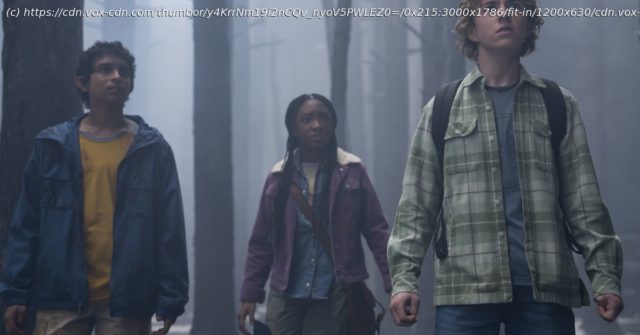The Percy Jackson panel for Disney Plus’ new show talked the importance of working closely with author Rick Riordan, the adult cast of the show, and dyeing issues.
At this year’s New York Comic Con, the creators of the upcoming Percy Jackson show on Disney Plus once again had a comforting reminder for fans of the book series: unlike the infamous 2011 movie, author Rick Riordan and his wife Becky were heavily involved in the production from the very beginning.
“Right from the beginning, this has been as much about a partnership, a collaboration, a relationship to make sure that everyone who comes to work on the show knows this is a family business,” said executive producer and showrunner John Steinberg. “This is a story that was hatched from a very personal place. As big as it is and as complicated and as many moving pieces… that’s always where its heart is going to be.”
“John and I got to sit with Rick and Becky and just be in a bubble,” said executive producer Dan Shotz. “We got to build this with the guy. He was part of the entire process. He was with us in the writer’s room, in casting, on set. Becky and Rick moved up there for most of the season, in Vancouver. It was a real pleasure and it just made a huge difference.”
All of the panelists in attendance were excited about nailing the little details of the show. Production designer Dan Hannah spoke to making the world of Camp Half-Blood real and exciting (“It was a fun place to hang out,” added director James Bobin) and most importantly real for the cast of the show.
“We were able to put it together as something you could go and experience. Especially for our actors, it was critical to take them into the world,” explained Hannah.
Meanwhile, in order to get the iconic Camp Half-Blood orange just right, costume designer Trish Monoghan says that the wardrobe department tried out 20 different shades of orange in pre-production.
“We had to find a shirt that would work outside in the sunlight, under a gray sky, in a forest, in an interior shot as well,” she explained. “We had to end up dyeing over 350 T-shirts in basically almost like a witch’s cauldron… you could only fit 19 t-shirts at a time.”
And after dyeing those shirts in batches of 19, there was the screen printing process to put the logo onto the shirts, and then washing them again.






![Miejskie obchody Narodowego Dnia Niepodległości [ZDJĘCIA]](http://nhub.news/wp-content/uploads/2024/11/thumb4ed5d601e2eb18925770b6081b96ba68-100x75.jpeg)